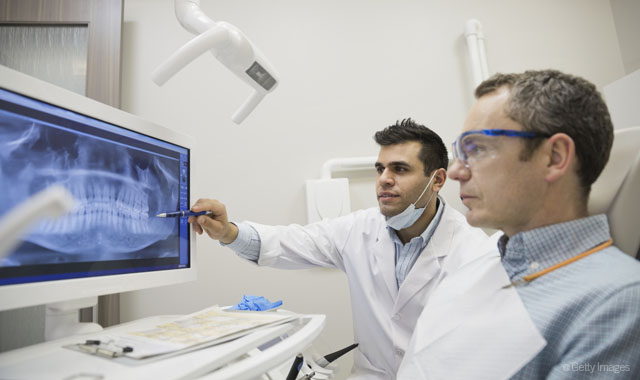4 practice-changing technologies
Technology is an interesting thing. Most times we get into it hoping that it will provide an amazing opportunity for us to do some things we haven't done before. Let's take a look that some of the things I've discovered over the years that have truly made a tremendous difference for my practice and myself.

Technology is an interesting thing. Most times we get into it hoping that it will provide an amazing opportunity for us to do some things we haven't done before. However, like most things, it always seems to work out better in the lab then in the real world. That's not to say, that technology is a disappointment; I like to think of technology as an adventure!
So for this column I'd like to take a look that some of the things I've discovered over the years that have truly made a tremendous difference for my practice and myself.
More from Dr. Flucke: A good night's rest: Why sleep apnea treatment is critical
The intraoral camera
While this one probably goes without saying, one of the best investments that I have ever made was done so in the mid-1990s. That was when, on the advice of my father, I purchased my first intraoral camera.
At the time, the camera was a $15,000 purchase and I had not been in practice very long. I barely managed to scrape together the necessary money comma but I soon discovered my father was right. He had told me “ think like your patients not like a dentist.” By that, he meant to endeavor to see things from the perspective of my patients and not from my own.
Of course we all know that he was right. Being able to show my patients their problems and conditions in a way that made it easy for them to understand unlock the door to better communication and more and better treatment.
More from Dr. Flucke: The top overlooked technologies your dental practice should be thinking about
Digital radiography
Another great visual technology and I am truly glad I invested in is digital X-ray. While the cost was even greater than the intraoral camera, the payoff was just as great and over the lifetime of the technology allowed me to communicate better and better with those I was treating.
I am a huge fan of sensor-based technology. While any digital X-ray system is much better than its film based cousin, the speed, image quality, and portability make this by far and away my favorite way to take X-rays in my office.
Digital X-ray also goes hand-in-hand with being able to communicate and co-diagnose with your patient. To do this properly requires a good way to get the images in front of your patients. This can be accomplished in a variety of ways, but my favorite is still a dual-monitor setup. This provides one monitor for the doctor and staff as well as another for the patient to view things such as their photos, their X-rays, patient education systems and entertainment. While there have been some upgrades to this idea over the years, I still find the traditional dual-monitor setup to be the best for me.
Continue to the next page to see the other two technologies...
Lasers
Of course, just because you use technology, doesn't mean that you have to always be on the leading edge of spending great sums of money. One of my favorite technologies in recent memory has been the purchase and use of lasers for my practice.
Lasers can do some amazing things for a minimal cash outlay. I have multiple diode lasers in my practice and hardly a day goes by that I don't find myself reaching for one for many different reasons.
There are lots of procedures that can be done much more efficiently with a diode laser than with any other modality. We routinely trough for crown margins, do biopsies, perform frenectomies and do cosmetic recontouring with minimal post-operative sensitivity.
Diode lasers have dropped enormously in cost over the past five years or so. They have now reached a point from a cost perspective that I truly do not feel money is any type of impediment for any practice. The benefits are huge while the costs are minimal. If you have been thinking about making a laser part of your practice, now is the time.
More from Dr. Flucke: The state of technology in dentistry
Digital caries diagnosis
Whether your interest is in Diagnodent, CaviVu, Acteon’s SoproLIFE or SoproCARE, the canary system, Air Techniques Spectra or something else, digital caries diagnosis is something you definitely need to consider.
Spotting decay at its smallest and easiest to treat is something that your patients will appreciate perhaps more than you can realize. You and they will also appreciate how much less effort and time it takes to perform your routine operative procedures.
Our digital caries detection systems are one of the central points of our hygiene exams and have proven to be one of the biggest hits with our patients of any of our clinical technologies. We receive referrals on a regular basis because of them and I sleep better at night knowing I am doing all I can to keep my patients at their healthiest.
Just like any other imaging system in your practice, you will need an easy and efficient way to share the images with your patience. However the good news is that all these imaging technologies work well together utilizing the dual-monitor setup I mentioned above. That means each time you introduce another imaging technology into your practice, you continue to cut the cost originally setting up the dual monitor systems.
More from Dr. Flucke: 3D CAD/CAM in the future of dentistry
Wrapping up
So there you have it. Just a few ways technology can make your day better and more efficient. Remember that technology doesn’t always have to be expensive. Sometimes less can definitely deliver more!